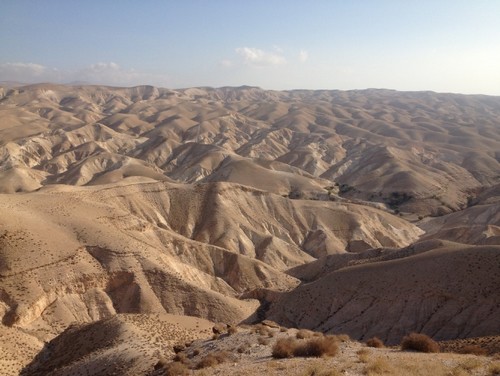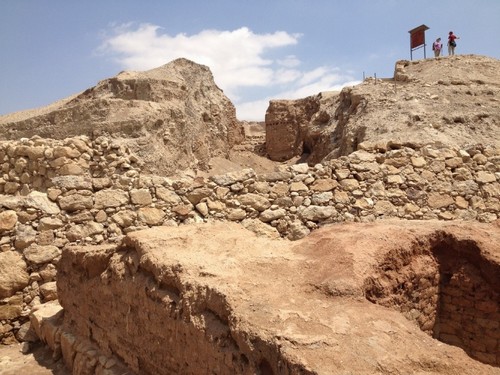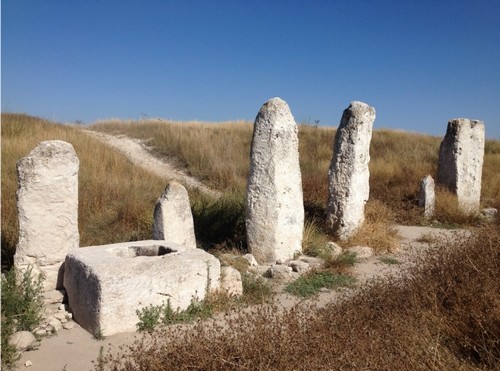
Today marks the end of an amazing-yet-tiring week. My brain is full of new information, my legs are tired from hiking, my memory is busy cataloguing once in a lifetime experiences, and my heart is grateful.
We started out the day just east of Jerusalem in the Judean Wilderness. The land we observed is referred to as ‘Midbar’ and ‘Yeshimon’ in the Bible. The former word refers specifically to the land we were looking at – the dry, open, but livable land of the Bedouin. The latter word means desolate, solitary, or desert. Both words are translated as ‘wilderness.’

I appreciated our instructor’s reminder that when someone is in the ‘wilderness,’ it doesn’t mean they’re any farther away from God! In fact, it’s just the opposite: Deuteronomy 32:10 says, ‘In a desert land he found him, in a barren and howling waste. He shielded him and cared for him; he guarded him as the apple of his eye…’ Our instructor pointed out that the phrase ‘apple of his eye’ is literally translated as ‘little man of the eye.’ He proposed that this passage might be suggesting that God was close enough to see his own reflection in the eyes of his people. In other words, when someone is in the desert they might feel alone, but it’s there that God draws near!
He then asked us to sit and listen to the quiet of the desert for a few moments. In the stillness, one could only hear the sound of distant birds and the wind blowing through the canyons. When everything else is stripped away, it’s just you and God. In the wilderness, God draws near.
We then moved on to follow Joshua’s journeys outlined in the first few chapters of Joshua. Our first stop along this route was at the Jordan River. We discussed Joshua’s crossing, water metaphors, and parallels in Jesus’ life (specifically, his baptism).

Our next stop was Jericho, which provided more practical knowledge for understanding Joshua’s military tactics.

Then we went to Nabi Samwil, which was extremely helpful in getting a handle on the land – being able to see several of the sites we’ve been studying on the map from a high vantage point helped solidify their locations in my mind.

Our final stop was at Gezer, the site of one of King Solomon’s cities as stated in 1 Kings 9:16. There were several standing stones at the site, which could have been boundary markers or altar stones.

While I am immensely grateful for this opportunity and everything I’m learning, I feel like I’m a Bible history ‘lightweight’ compared to my classmates. I’ve never been a history or geography buff, so it’s a little intimidating knowing that I have a test over those subjects on Monday (I plan to study quite a bit tomorrow!). I will say this much, though: the material is being presented in a way that makes me want to learn more. Just today I was telling one of my classmates that when I get home, I’d like to do a read-through of the Bible with a map handy. To use an archaeological metaphor, it’s like I’m beginning to unearth something that has always been just below the surface, but until now I’ve never had the tools to uncover it. Slowly but surely, I hope to improve my skills so that I can reap the full benefits of this experience.